- Home
- Terry Pratchett
The Science of Discworld I tsod-1 Page 3
The Science of Discworld I tsod-1 Read online
Page 3
The Bursar was not, as many thought, insane. On the contrary, he was a man with both feet firmly on the ground, the only difficulty being that the ground in question was on some other planet, the one with the fluffy pink clouds and the happy little bunnies. He did not mind because he much preferred it to the real one, where people shouted too much, and he spent as little time there as possible. Unfortunately this had to include mealtimes. The meal service on Planet Nice was unreliable.
Smiling his faint little smile, he put down his axe and ambled off. After all, he reasoned, the point was that the wretched thing stayed out of the ... whatever it was, and it could certainly do a simple job like that without his watching it.
Unfortunately Mr Stibbons was too worried to be very observant, and none of the other wizards bothered much about the fact that everything which stood between them and thaumic devastation was blowing bubbles into his glass of milk.
4. SCIENCE AND MAGIC
IF WE WANTED TO, we could comment on several features of Ponder Stibbons's experiment, describing the associated science. For example, there is a hint of the 'many worlds' interpretation of quantum mechanics, in which billions of universes branch off from ours every time a decision might go more than one way. And there is the unofficial standard procedure of public opening cere-monies, in which A Royal Personage or The President pulls a big lever or pushes a big button to 'start' some vast monument to technology, which has been running for days behind the scenes. When Queeh Elizabeth II opened Calder Hall, the first British nuclear power station, this is just what went on, big meter and all.
However, it's a bit early for Quantum, and most of us have forgotten Calder Hall completely. In any case there's a more urgent matter to dispose of. This is the relation between science and magic. Let's start with science.
Human interest in the nature of the universe, and our place within it, goes back a long, long way. Early humanoids living on the African savannahs, for instance, can hardly have failed to notice that at night the sky was full of bright spots of light. At what stage in their evolution they first began to wonder what those lights were is a mystery, but by the time they had evolved enough intelligence to poke sticks into edible animals and to use fire, it is unlikely that they could stare at the night sky without wondering what the devil it was for (and, given humanity's traditional obsessions, whether it involved sex in some way). The Moon was certainly impressive, it was big, bright, and changed shape.
Creatures lower on the evolutionary ladder were certainly aware of the Moon. Take the turtle, for instance, about as Discwordly a beast as you can get. When today's turtles crawl up the beach to lay their eggs and bury them in the sand, they somehow choose their timing so that when the eggs hatch, the baby turtles can scramble towards the sea by aiming at the Moon. We know this because the lights of modern buildings confuse them. This behaviour is remarkable, and it's not at all satisfactory to put it down to 'instinct' and pretend that's an answer. What is instinct? How does it work? How did it arise? A scientist wants plausible answers to such questions, not just an excuse to stop thinking about them. Presumably the baby turtles' moonseeking tendencies, and their mothers' uncanny sense of timing, evolved together. Turtles that just happened, by accident, to lay their eggs at just the right time for them to hatch when the Moon would be to seawards of their burial site, and whose babies just happened to head towards the bright lights, got more of the next generation back to sea than those that didn't. All that was needed to establish these tendencies as a universal feature of turtle-hood was some way to pass them on to the next generation, which is where genes come in. Those turtles that stumbled on a workable navigational strategy, and could pass that strategy on to their offspring by way of their genes, did better than the others. And so they prospered, and outcompeted the others, so that soon the only turtles around were the ones that could navigate by the Moon.
Does Great A'Tuin, the turtle that holds up the elephants that hold up the Disc, swim through the depths of space in search of a distant light? Perhaps. According to The Light Fantastic, 'Philosophers have debated for years about where Great A'Tuin might be going, and have often said how worried they are that they might never find out. They're due to find out in about two months. And then they're really going to worry ...' For, like its earthbound counterpart, Great A'Tuin is in reproductive mode, in this case going to its own hatching ground to watch the emergence. That story ends with it swimming off into the cool depths of space, orbited by eight baby turtles (who appear to have gone off on their own, and perhaps even now support very small Discworlds) ...
The interesting thing about the terrestrial turtlish trickery is that at no stage is it necessary for the animals to be conscious that their timing is geared to the Moon's motion, or even that the Moon exists. However, the trick won't work unless the baby turtles notice the Moon, so we deduce that they did. But we can't deduce the existence of some turtle astronomer who wondered about the Moon's puzzling changes of shape.
When a particular bunch of social-climbing monkeys arrived on the scene, however, they began to ask such questions. The better the monkeys got at answering those questions, the more baffling the universe became; knowledge increases ignorance. The message they got was: Up There is very different from Down Here.
They didn't know that Down Here was a pretty good place for creatures like them to live. There was air to breathe, animals and plants to eat, water to drink, land to stand on, and caves to get out of the rain and the lions. They did know that it was changeable, chaotic, unpredictable ...
They didn't know that Up There, the rest of the universe, isn't like that. Most of it is empty space, a vacuum. You can't breathe vacuum. Most of what isn't vacuum is huge balls of overheated plasma. You can't stand on a ball of flame. And most of what isn't vacuum and isn't burning is lifeless rock. You can't eat rock[9]. They were going to learn this later on. What they did know was that Up There was, in human timescales, calm, ordered, regular. And predictable, too, you could set your stone circle by it.
All this gave rise to a general feeling that Up There was different from Down Here for a reason. Down Here was clearly designed for us. Equally clearly, Up There wasn't. Therefore it must be designed for somebody else. And the new humanity was already speculating about some suitable tenants, and had been ever since they'd hidden in the caves from the thunder. The gods! They were Up There, looking Down! And they were clearly in charge, because humanity certainly wasn't. As a bonus, that explained all of the things Down Here that were a lot more complicated than anything visible Up There, like thunderstorms and earthquakes and bees. Those were under the control of the gods.
It was a neat package. It made us feel important. It certainly made the priests important. And since priests were the sort of people who could have your tongue torn out or banish you into Lion Country for disagreeing with them, it rapidly became an enormously popular theory, if only because those who had other ones either couldn't speak or were up a tree somewhere.
And yet ... every so often some lunatic with no sense of self-preservation was born who found the whole story unsatisfying, and risked the wrath of the priesthood to say so. Such folk were already around by the time of the Babylonians, whose civilization flourished between and around the Tigris and Euphrates rivers from 4000 BC to 300 BC. The Babylonians, a term that covers a whole slew of semi-independent peoples living in separate cities such as Babylon, Ur, Nippur, Uruk, Lagash, and so on, certainly worshipped the gods like everyone else. One of their stories about gods is the basis of the Biblical tale of Noah and his ark, for instance. But they also took a keen interest in what those lights in the sky did. They knew that the Moon was round, a sphere rather than a flat disc. They probably knew that the Earth was round, too, because it cast a rounded shadow on the Moon during lunar eclipses. They knew that the year was about 365 1/4 days long. They even knew about the 'precession of the equinoxes', a cyclic variation that completes one cycle every 26,000 years. They made t
hese discoveries by keeping careful records of how the Moon and the planets moved across the sky. Babylonian astronomical records from 500 BC survive to this day.
From such beginnings, an alternative explanation of the universe came into being. It didn't involve gods, at least directly, so it didn't find much favour with the priestly class. Some of their descendants are still trying to stamp it out, even today. The traditional priesthoods (who then and now often included some very intelligent people) eventually worked out an accommodation with this godless way of thinking, but it's still not popular with postmodernists, creationists, tabloid astrologers and others who prefer the answers you can make up for yourself at home.
The current name for what has variously been called 'heresy' and 'natural philosophy' is, of course, 'science'.
Science has developed a very strange view of the universe. It thinks that the universe runs on rules. Rules that never get broken. Rules that leave little room for the whims of gods.
This emphasis on rules presents science with a daunting task. It has to explain how a lot of flaming gas and rocks Up There, obeying simple rules like 'big things attract small things, and while small things also attract big things they don't do it strongly enough so as you'd notice', can have any chance whatsoever of giving rise to Down Here. Down Here, rigid obedience to rules seems notably absent. One day you go out hunting and catch a dozen gazelles; next day a lion catches you. Down Here the most evident rule seems to be 'There are no rules', apart perhaps from the one that could be expressed scientifically as 'Excreta Occurs'. As the Harvard Law of Animal Behaviour puts it: 'Experimental animals, under carefully controlled laboratory conditions, do what they damned well please.' Not only animals: every golfer knows that something as simple as a hard, bouncy sphere with a pattern of tiny dots on it never does what it's supposed to do. And as for the weather ...
Science has now divided into two big areas: the life sciences, which tell us about living creatures, and the physical sciences, which tell us about everything else. Historically, 'divides' is definitely the word, the scientific styles of these two big divisions have about as much in common as chalk and cheese. Indeed, chalk is a rock and so clearly belongs to the geological sciences, whereas cheese, formed by bacterial action on the bodily fluids of cows, belongs to the biological sciences. Both divisions are definitely science, with the same emphasis on the role of experiments in testing theories, but their habitual thought patterns run along different lines.
At least, until now.
As the third millennium approaches, more and more aspects of science are straddling the disciplines. Chalk, for instance, is more than just a rock: it is the remains of shells and skeletons of millions of tiny ocean-living creatures. And making cheese relies on chemistry and sensor technology as much as it does on the biology of grass and cows.
The original reason for this major bifurcation in science was a strong perception that life and non-life are extremely different. Non-life is simple and follows mathematical rules; life is complex and follows no rules whatsoever. As we said, Down Here looks very different from Up There.
However, the more we pursue the implications of mathematical rules, the more flexible a rule-based universe begins to seem. Conversely, the more we understand biology, the more important its physical aspects become, because life isn't a special kind of matter, so it too must obey the rules of physics. What looked like a vast, unbridgeable gulf between the life sciences and the physical sciences is shrinking so fast that it's turning out to be little more than a thin line scratched in the sand of the scientific desert.
If we are to step across that line, though, we need to revise the way we think. It's all too easy to fall back on old, and inappropriate, habits. To illustrate the point, and to set up a running theme for this book, let's see what the engineering problems of getting to the Moon tell us about how living creatures work.
The main obstacle to getting a human being on to the Moon is not distance, but gravity. You could waIk to the Moon in about thirty years, given a path, air, and the usual appurtenances of the experienced traveller, were it not for the fact that it's uphill most of the way. It takes energy to lift a person from the surface of the planet to the neutral point where the Moon's pull cancels out the Earth's. Physics provides a definite lower limit for the energy you must expend, it's the difference between the 'potential energy' of a mass placed at the neutral point and the potential energy of the same mass placed on the ground. The Law of Conservation of Energy says that you can't do the job with less energy, however clever you are.
You can't beat physics.
This is what makes space exploration so expensive. It takes a lot of fuel to lift one person into space by rocket, and to make matters worse, you need more fuel to lift the rocket ... and more fuel to lift the fuel... and ... At any rate, it seems that we're stuck at the bottom of the Earth's gravity well, and the ticket out has to cost a fortune.
Are we, though?
At various times, similar calculations have been applied to living creatures, with bizarre results. It has been 'proved' that kangaroos can't jump, bees can't fly, and birds can't get enough energy from their food to power their search for the food in the first place. It has even been 'proved' that life is impossible because living systems become more and more ordered, whereas physics implies that all systems become more and more disordered. The main message that biologists have derived from these exercises has been a deep scepticism about the relevance of physics to biology, and a comfortable feeling of superiority, because life is clearly much more interesting than physics.
The correct message is very different: be careful what tacit assumptions you make when you do that kind of calculation. Take that kangaroo, for instance. You can work out how much energy a kangaroo uses when it makes a jump, count how many jumps it makes in a day, and deduce a lower limit on its daily energy requirements. During a jump, the kangaroo leaves the ground, rises, and drops back down again, so the calculation is just like that for a space rocket. Do the sums, and you find that the kangaroo's daily energy requirement is about ten times as big as anything it can get from its food. Conclusion: kangaroos can't jump. Since they can't jump, they can't find food, so they're all dead.
Strangely, Australia is positively teeming with kangaroos, who fortunately cannot do physics.
What's the mistake? The calculation models a kangaroo as if it were a sack of potatoes. Instead of a thousand kangaroo leaps per day (say), it works out the energy required to lift a sack of potatoes off the ground and drop it back down, 1000 times. But if you look at a slow-motion film of a kangaroo bounding across the Australian outback, it doesn't look like a sack of potatoes. A kangaroo bounces, lolloping along like a huge rubber spring. As its legs go up, its head and tail go down, storing energy in its muscles. Then, as the feet hit the ground, that energy is released to trigger the next leap. Because most of the energy is borrowed and paid back, the energy cost per leap is tiny.
Here's an association test for you. 'Sack of potatoes' is to 'kangaroo' as 'rocket' is to, what? One possible answer is a space elevator. In the October 1945 issue of Wireless World the science-fiction writer Arthur C. Clarke invented the concept of a geostationary orbit, now the basis of virtually all communications satellites. At a particular height, about 22,000 miles (35,000 km) above the ground, a satellite will go round the Earth exactly in synchrony with the Earth's rotation. So from the ground it will look as though the satellite isn't moving. This is useful for communications: you can point your satellite dish in a fixed direction and always get coherent, intelligent signals or, failing that, MTV.
Nearly thirty years later Clarke popularized a concept with far greater potential for technological change. Put up a satellite in geostationary orbit and drop a long cable down to the ground. It has to be an amazingly strong cable: we don't yet have the technology but 'carbon nanotubes' now being created in the laboratory come close. If you get the engineering right, you can build an elevator 22,000
miles high. The cost would be enormous, but you could then haul stuff into space just by pulling on the cable from above.
Ah, but you can't beat physics. The energy required would be exactly the same as if you used a rocket.
Of course. Just as the energy required to lift a kangaroo is exactly the same as that required to lift a sack of potatoes.
The trick is to find a way to borrow energy and pay it back. The point is that once the space elevator is in place, after a while there's just as much stuff coming down it as there is going up. Indeed, if you're mining the Moon or the asteroids for metals, there will soon be more stuff coming down than goes up. The materials going down provide the lifting energy for those going up. Unlike a rocket, which gets used up every time you fire it, a space elevator is self-sustaining.
Life is like a space elevator. What life self-sustains is not energy, but organization. Once you have a system that is so highly organized that it can reliably make copies of itself, that degree of organization is no longer 'expensive'. The initial investment may have been huge, as for a space elevator, but once the investment has been made, everything else is free.
If you want to understand biology, it is the physics of space elevators that you need, not the physics of rockets.
How can Discworld's magic illuminate Roundworld's science? Just as the gulf between the physical and biological sciences is turning out to be far narrower than we used to think, so the gulf between science and magic is also becoming smaller The more advanced our technologies become, the less possible it is for the everyday user to have any idea of how they work. As a result, they look more and more like magic. As Clarke realized, this tendency is inevitable; Gregory Benford went further and declared it desirable.
Technology works because whoever built it in the first place figured out enough of the rules of the universe to make the technology do what was required of it. You don't need to get the rules right to do this, just right enough, space rockets work fine even though their orbits are computed using Newton's stab at the rules of gravity, which aren't as accurate as Einstein's. But what you can accomplish is severely constrained by what the universe will permit. With magic, in contrast, things work because people want them to. You still have to find the right spell, but what drives the development is human wishes (and, of course, the knowledge, skill and experience of the practitioner). This is one reason why science often seems inhuman, because it looks at how the universe drives us, rather than the other way round.

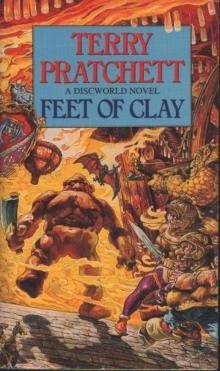 Feet of Clay
Feet of Clay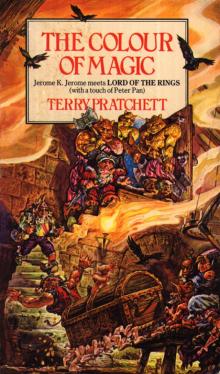 The Color of Magic
The Color of Magic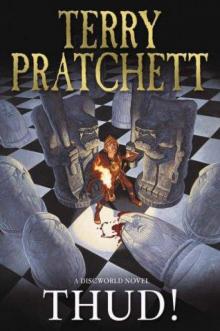 Thud!
Thud! Good Omens: The Nice and Accurate Prophecies of Agnes Nutter, Witch
Good Omens: The Nice and Accurate Prophecies of Agnes Nutter, Witch I Shall Wear Midnight
I Shall Wear Midnight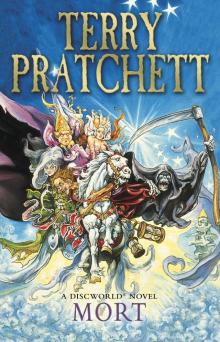 Mort
Mort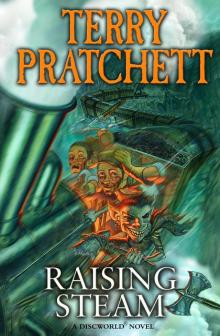 Raising Steam
Raising Steam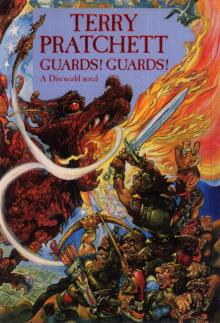 Guards! Guards!
Guards! Guards! Equal Rites
Equal Rites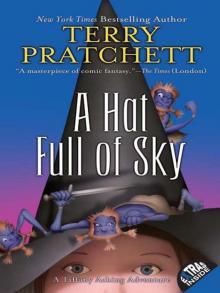 A Hat Full of Sky
A Hat Full of Sky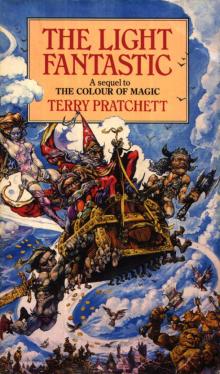 The Light Fantastic
The Light Fantastic Mrs Bradshaw's Handbook
Mrs Bradshaw's Handbook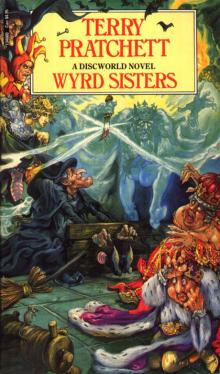 Wyrd Sisters
Wyrd Sisters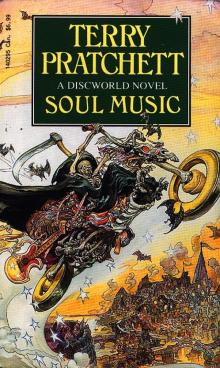 Soul Music
Soul Music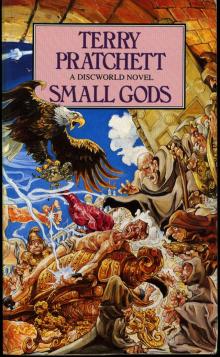 Small Gods
Small Gods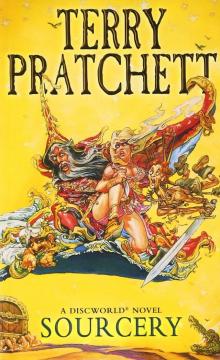 Sourcery
Sourcery Reaper Man
Reaper Man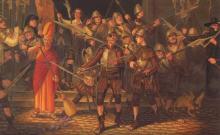 Night Watch
Night Watch Lords and Ladies
Lords and Ladies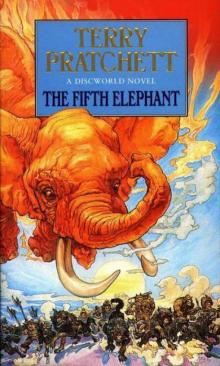 The Fifth Elephant
The Fifth Elephant Monstrous Regiment
Monstrous Regiment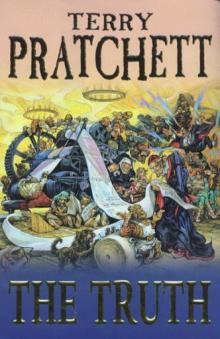 The Truth
The Truth Witches Abroad
Witches Abroad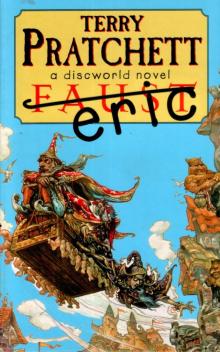 Eric
Eric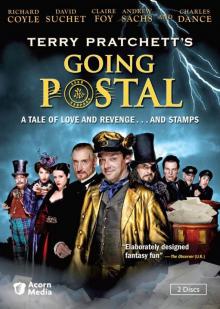 Going Postal
Going Postal Men at Arms
Men at Arms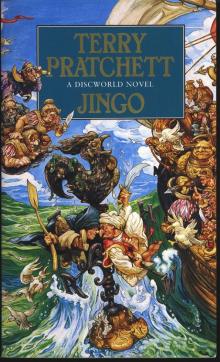 Jingo
Jingo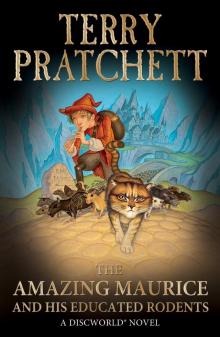 The Amazing Maurice and His Educated Rodents
The Amazing Maurice and His Educated Rodents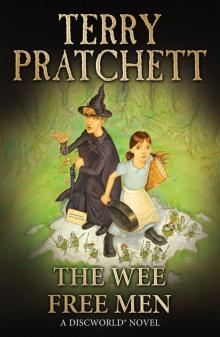 The Wee Free Men
The Wee Free Men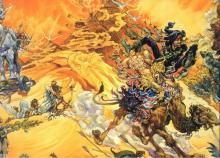 Pyramids
Pyramids Wintersmith
Wintersmith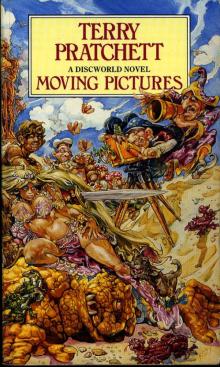 Moving Pictures
Moving Pictures Carpe Jugulum
Carpe Jugulum Interesting Times
Interesting Times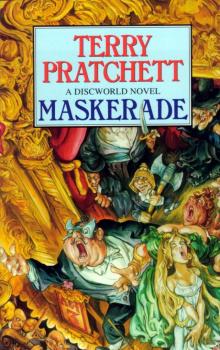 Maskerade
Maskerade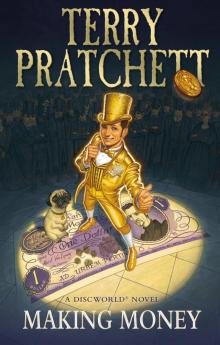 Making Money
Making Money The Shepherd's Crown
The Shepherd's Crown Hogfather
Hogfather Troll Bridge
Troll Bridge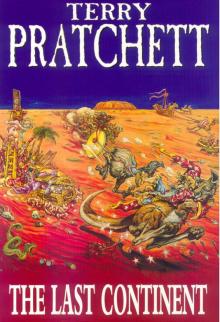 The Last Continent
The Last Continent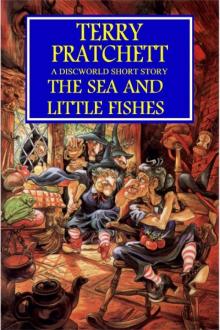 The Sea and Little Fishes
The Sea and Little Fishes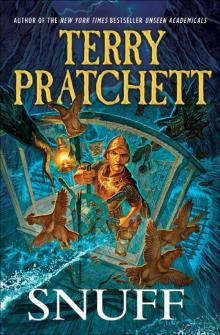 Snuff
Snuff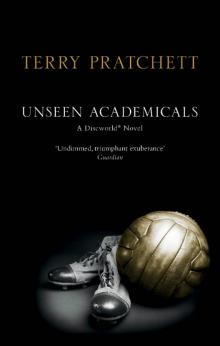 Unseen Academicals
Unseen Academicals Guards! Guards! tds-8
Guards! Guards! tds-8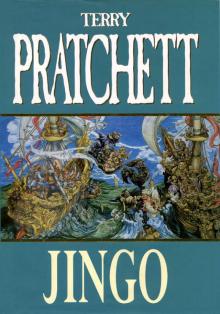 Jingo d-21
Jingo d-21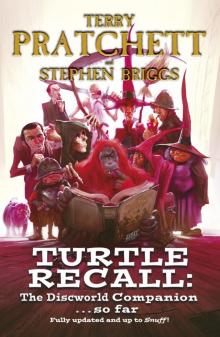 Turtle Recall: The Discworld Companion ... So Far
Turtle Recall: The Discworld Companion ... So Far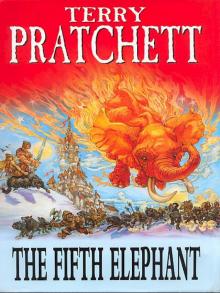 The Fifth Elephant d-24
The Fifth Elephant d-24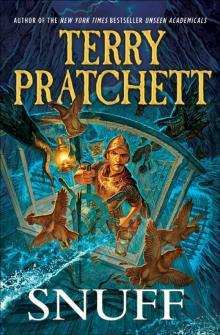 Discworld 39 - Snuff
Discworld 39 - Snuff The Long War
The Long War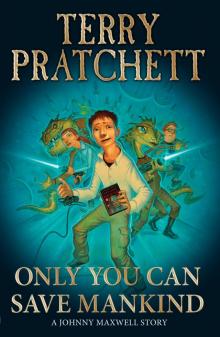 Only You Can Save Mankind
Only You Can Save Mankind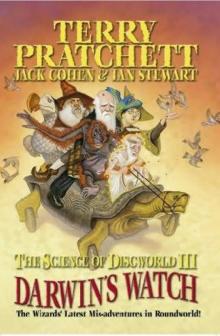 The Science of Discworld III - Darwin's Watch tsod-3
The Science of Discworld III - Darwin's Watch tsod-3 A Blink of the Screen: Collected Short Fiction
A Blink of the Screen: Collected Short Fiction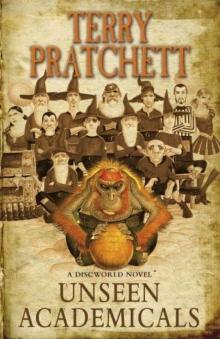 Unseen Academicals d-37
Unseen Academicals d-37 Wings
Wings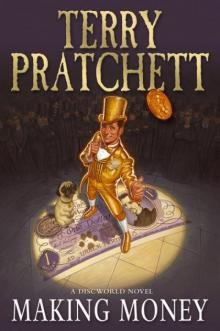 Making Money d-36
Making Money d-36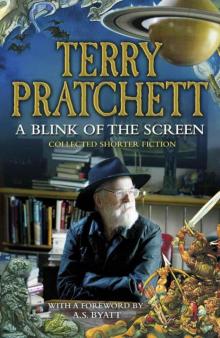 A Blink of the Screen
A Blink of the Screen Johnny and the Bomb
Johnny and the Bomb Dodger
Dodger Strata
Strata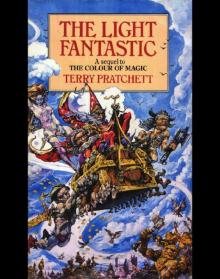 Discworld 02 - The Light Fantastic
Discworld 02 - The Light Fantastic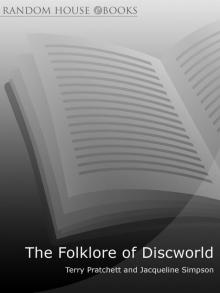 The Folklore of Discworld
The Folklore of Discworld The Science of Discworld
The Science of Discworld The Unadulterated Cat
The Unadulterated Cat Raising Steam: (Discworld novel 40) (Discworld Novels)
Raising Steam: (Discworld novel 40) (Discworld Novels) The World of Poo
The World of Poo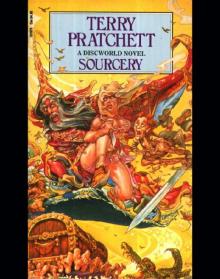 Discworld 05 - Sourcery
Discworld 05 - Sourcery The Witch's Vacuum Cleaner: And Other Stories
The Witch's Vacuum Cleaner: And Other Stories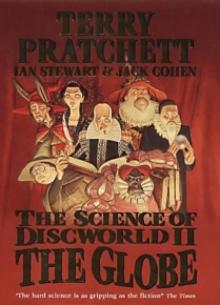 The Science of Discworld II - The Globe tsod-2
The Science of Discworld II - The Globe tsod-2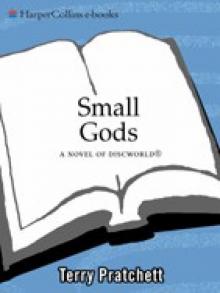 Small Gods: Discworld Novel, A
Small Gods: Discworld Novel, A Men at Arms tds-15
Men at Arms tds-15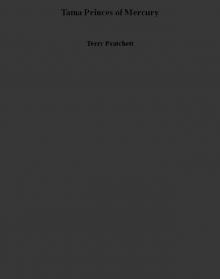 Tama Princes of Mercury
Tama Princes of Mercury The Last Hero (the discworld series)
The Last Hero (the discworld series)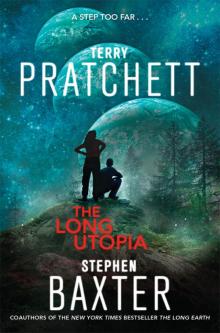 The Long Utopia
The Long Utopia Discworld 03 - Equal Rites
Discworld 03 - Equal Rites Terry Pratchett - The Science of Discworld
Terry Pratchett - The Science of Discworld The Long Earth
The Long Earth The Carpet People
The Carpet People The Sea and Little Fishes (discworld)
The Sea and Little Fishes (discworld)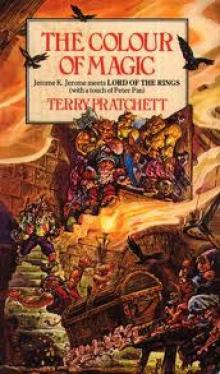 The Colour of Magic
The Colour of Magic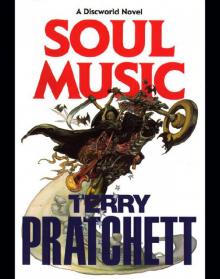 Discworld 16 - Soul Music
Discworld 16 - Soul Music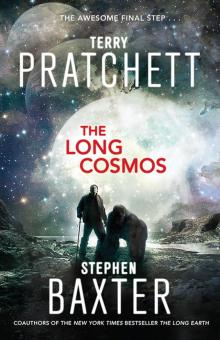 The Long Cosmos
The Long Cosmos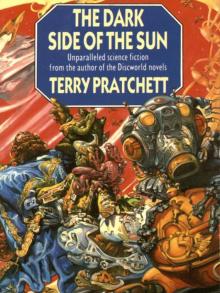 The Dark Side of the Sun
The Dark Side of the Sun Monstrous Regiment tds-28
Monstrous Regiment tds-28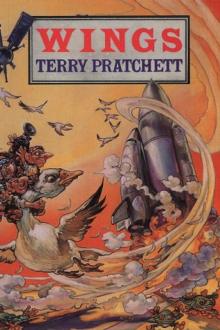 The Bromeliad 3 - Wings
The Bromeliad 3 - Wings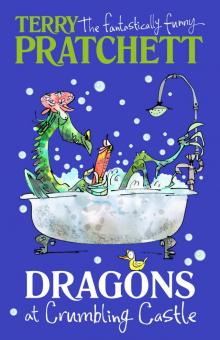 Dragons at Crumbling Castle: And Other Stories
Dragons at Crumbling Castle: And Other Stories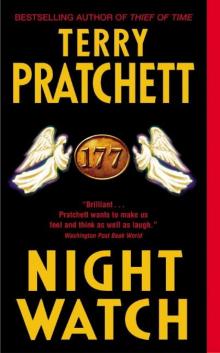 Night Watch tds-27
Night Watch tds-27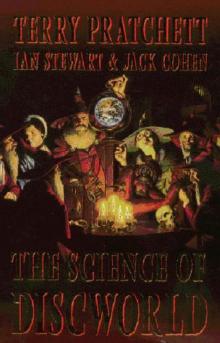 The Science of Discworld I tsod-1
The Science of Discworld I tsod-1 The Bromeliad 1 - Truckers
The Bromeliad 1 - Truckers The Science of Discworld Revised Edition
The Science of Discworld Revised Edition The Abominable Snowman
The Abominable Snowman Father Christmas’s Fake Beard
Father Christmas’s Fake Beard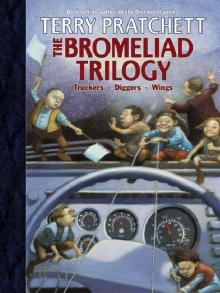 The Bromeliad Trilogy
The Bromeliad Trilogy A Slip of the Keyboard
A Slip of the Keyboard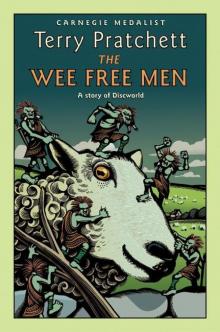 The Wee Free Men d(-2
The Wee Free Men d(-2 Johnny and the Dead
Johnny and the Dead Mrs Bradshaw's Handbook (Discworld Novels)
Mrs Bradshaw's Handbook (Discworld Novels)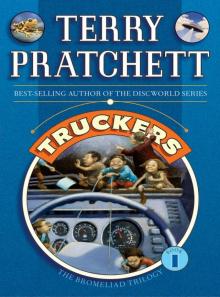 Truckers
Truckers The Amazing Maurice and His Educated Rodents d(-1
The Amazing Maurice and His Educated Rodents d(-1 Diggers
Diggers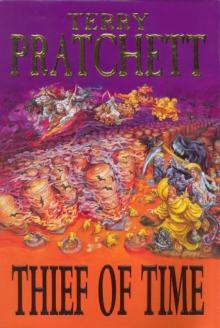 Thief of Time tds-26
Thief of Time tds-26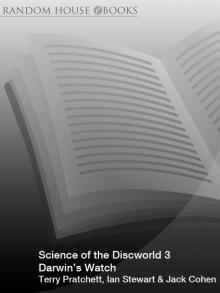 Science of Discworld III
Science of Discworld III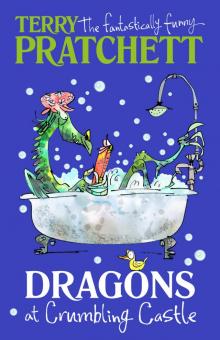 Dragons at Crumbling Castle
Dragons at Crumbling Castle Nation
Nation Darwin's Watch
Darwin's Watch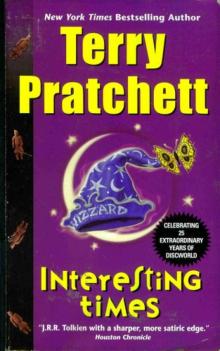 Interesting Times d-17
Interesting Times d-17 The Bromeliad 2 - Diggers
The Bromeliad 2 - Diggers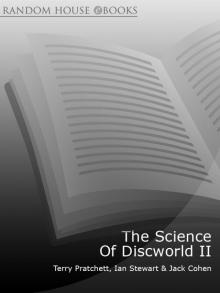 The Science of Discworld II
The Science of Discworld II